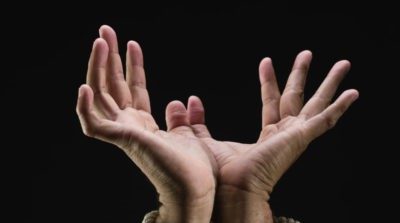Carlee Russell’s Abduction Draws Attention to Missing Black Women Cases
With the recent and horrific abduction of 25-year-old nursing student Carlee Russell when she was lured into an insidious trap near Hoover, Alabama on July 15, the problem of missing and murdered Black women is back on the national radar. Russell’s disappearance is putting the spotlight on the number of Black women who go missing every year.
For years loved ones and advocates of these unfortunate women have decried the response by law enforcement in many of these cases, asserting that again the race of the victim is as almost as much of a culprit as are those agencies who are slow to respond, negligent in their duty and unsympathetic to the concerns of those looking for missing Black women.
According to the study “Missing White Woman Syndrome: An Empirical Analysis of Race and Gender Disparities in Online News Coverage of Missing Persons,” Black people were “significantly underrepresented in the population of missing persons who received coverage,” even though missing people of color make up nearly 40 percent of all missing persons cases.
In 2022 the NCIC reported 546,568 people had been reported missing in the U.S. Nearly 40 percent of those persons reported missing were people of color, but Black Americans make up only 13 percent of the population.
“Not one person can name a missing black or brown male or female or child that has garnered mainstream media,” said Derrica Wilson, the co-founder of the Black and Missing Foundation.
While many of the missing Black women are suspected to be the victims of sex trafficking and in some cases murder, very little has been done to bring attention to the plight of Black victims in comparisons to the attention and media coverage given in the cases of White victims.
Essentially it comes down to a lack of coverage from media outlets to apply pressure to law enforcement officials and their investigations for cases involving missing Black persons.
The Pew Research Center’s analysis of newsrooms found 77 percent of newsroom employees are white. The Center for Policing Equity found local police departments nationwide don’t reflect the racial makeup of the communities they serve, with white officers making up nearly 70 percent of departments across the country.
More than a decade earlier the NAACP issued a resolution regarding the issue of missing persons of color:
WHEREAS, despite representing 12.85% of the population, black Americans accounted for nearly 226,000 or 34% of all missing persons reported in 2012. According to the FBI’s National Crime Information Center, the comparison with other racial groups is unfavorable. Whites and Hispanics are a combined 80% of the population, but account for 60% of missing persons; and
WHEREAS, when you break down the numbers by age, the Black and Missing Foundation reports that 37% of missing minors and 28%.2% of missing adults in 2013 were black. No fewer than 270,000 minorities have gone missing since 2010, 135,000 of whom were black and 64,000 were black women and girls were missing nationwide, according to the Black and Missing Foundation 2014 Report; and
WHEREAS, according the National Crime Information Center, there were 170,899 missing black children under age 18 in the United States in 2016; and
WHEREAS, how the missing reports are handled by the media raises concern. Critics citing a stark racial divide in news coverage of missing reports of African Americans and in particular African Women and children.
THEREFORE, BE IT RESOLVED, that this resolution request the National Association for the Advancement of Color People research new and recent updates on African American women and children who are missing.
BE IT FURTHER RESOLVED, that the NAACP host town hall meetings between lawmakers, law enforcement, justice department officials, and child advocate groups on missing black women and their children.
BE IT FURTHER RESOLVED, that the National Association of Colored People insist that all media coverage be equal regardless of race, encourage that their names become permanent fixtures on Twitter, their names get hashtags or trending topics, nationwide man hunts or search parties take place, interrupt TV programs with BREAKING NEWS and that African American missing women and children’s families be treated fairly in their time of their greatest need.
BE IT FINALLY RESOLVED, that the National Association for the Advancement of Colored People encourage that more federal funding be allocated to agencies, groups, and organizations for the purpose of researching and locating missing women and children of color.

